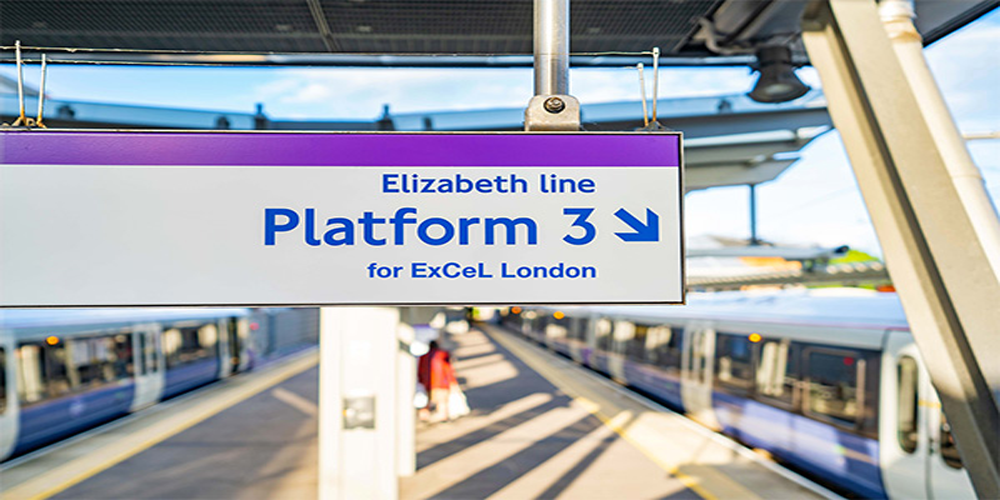The announcement “mind the gap” is almost as much a part of travelling in London as the Tube sign or a red bus. But when is the gap between the train and the platform too far and too dangerous?
Eric Loach thinks he has the answer to that, and it is 30cm, or 12 inches. He knows this because while lying on the platform in agony having fallen over while getting off a train, he had time to look at the vertical drop between the train and the platform. In February, at Ealing Broadway station in west London, he stepped off an Elizabeth line train onto the platform. Such was the force from the drop, that he broke a bone in his foot. He collapsed on the platform.
Eric, who also suffered bruising to his right knee, says the gap is not acceptable: “It’s a 12-inch gap. Mums with buggies, people with heavy luggage, elderly people, of course it’s not acceptable. “It’s a scandal, someone will be seriously injured or die. It’s a death trap.”
The fall happened in rush hour: “It was very, very painful.
“I was trying to get off. Other people were trying to force their way on. I was terrified looking at the gap, lost my balance and came down and fell and broke a bone in my left foot. And mashed up my right knee. I was on the ground for about 20 minutes. I was taken home in a taxi and a couple of days later I realised I was bad so I went to Ealing hospital. “
Since his fall, he has heard of others who have fallen at the same station and has complained to Transport for London (TfL).
TfL says safety is its “number one priority” but it recognises gaps can be “larger at some older stations”.
What particularly annoys Eric is he thinks that for a new railway, this is a missed opportunity. The Elizabeth line was opened in May 2022, a cost of £19bn. As a train comes in to Ealing Broadway, Eric points out where it happened. “Look at this gap, it’s ridiculous,” he says.
“This is a modern, £19bn railway system, and we have that. It’s a brand new line and a brand new station. It’s difficult enough getting on but getting off is even more dangerous. Somebody is going to fall there, bang their head and die. They either have to raise the platform or lower the track.”
So is there a legal safety limit to what the gap should be between trains and platforms?
Certainly some gaps at platforms in London are big. Bank station and Clapham Junction spring to mind.
And the central section of the Elizabeth line is blessed with flat boarding between the platform and the train. So why not in the west?
The platforms at Ealing Broadway are actually owned by Network Rail and aren’t new. Before the introduction of Elizabeth line services, they were used by GWR trains out of London Paddington.
Safety guidance says new platforms should not have a horizontal gap larger than 27.5cm (10.8in) or a vertical gap of more than 23cm (9in).
However, Rail Safety and Standards Board rules only apply to new stations, so Ealing Broadway as an older platform doesn’t fall under the regulations. The rules don’t apply.
The government’s Office for Road and Rail says: “Under current health and safety law, railway operators should reduce the risk from gaps as far as is reasonably practicable.
“For existing station platforms, a judgement has to be made as to whether it would be reasonably practicable to reduce the gaps or whether the cost would be disproportionate to the level of risk.”
There are also injuries due to the gap on the London Underground, with hundreds being affected every year.
A Freedom of Information request shows more than 300 passengers were involved in gap incidents in 2015 for example.
TfL said at the time: “Incidents of our customers being injured getting on and off Tube trains are rare, with fewer than one incident in every four million journeys last year. The majority of incidents result in either no injury (approximately 50%) or where only a minor injury was caused. Major injuries are very rare and account for fewer than 2% of all incidents.”
But in May 2020, a man died after being hit by the Tube train he had been on after falling through the gap on the Bakerloo line at Waterloo station.
The curve of the track meant the passenger was difficult to detect on the drivers’ CCTV, the Rail Accident Investigation Branch (RAIB) found.
